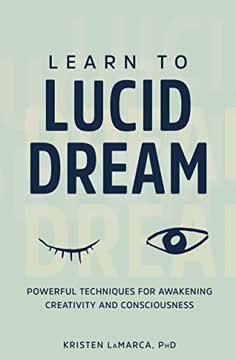Key Takeaways
1. Lucid dreaming is a learnable skill with profound benefits
"Even just recognizing that you're dreaming is, in itself, an incredible experience."
Lucid dreaming defined. Lucid dreaming occurs when you become aware that you are dreaming while still asleep. This awareness allows you to consciously influence and explore your dream environment.
Benefits of lucid dreaming:
- Enhanced creativity and problem-solving
- Overcoming fears and nightmares
- Personal growth and self-discovery
- Practicing skills and rehearsing scenarios
- Exploring spiritual and transcendent experiences
With proper training and techniques, most people can learn to lucid dream regularly. The ability offers a unique opportunity to access expanded states of consciousness and gain insights into the nature of reality and the self.
2. Recognize dreamsigns to trigger lucidity
"Dreams are full of features that distinguish them from waking reality."
Dreamsigns are cues. Dreamsigns are unusual or impossible events in dreams that can signal you are dreaming. By learning to recognize these cues, you can trigger lucidity within a dream.
Categories of dreamsigns:
- Form: Bizarre shapes, deformed objects, disappearing items
- Context: Unlikely settings or situations
- Action: Impossible actions or malfunctioning technology
- Inner Awareness: Odd bodily sensations, thoughts, or emotions
To develop your ability to recognize dreamsigns, keep a dream journal and regularly review it to identify recurring themes or oddities in your dreams. Practice reality checks during the day by asking "Am I dreaming?" when you encounter something unusual. This habit will carry over into your dreams, increasing your chances of becoming lucid.
3. Use MILD technique to induce lucid dreams
"MILD is a prospective memory technique designed to help you set and carry out the intention to remember that you are dreaming."
MILD: Mnemonic Induction of Lucid Dreams. This technique, developed by Stephen LaBerge, involves setting a strong intention to remember you're dreaming before sleep.
The three Rs of MILD:
- Rescript: Mentally revise a recent dream to include becoming lucid
- Rehearse: Vividly imagine yourself recognizing you're dreaming
- Remind: Set a mental reminder to recognize when you're dreaming
Practice MILD when you wake up during the night, especially after dreaming. Combine it with the sleep interruption method for increased effectiveness: wake up after about 4-5 hours of sleep, stay awake for 30-60 minutes, then return to sleep practicing MILD. This increases your chances of entering a lucid dream during subsequent REM periods.
4. Practice mindfulness to enhance lucid dreaming abilities
"If we're always 'asleep' and on autopilot in waking life, how can we expect to 'wake up' and be lucid in dreams?"
Mindfulness supports lucidity. Practicing mindfulness meditation can significantly improve your ability to lucid dream by training your mind to be more aware of your present state of consciousness.
Key aspects of mindfulness for lucid dreaming:
- Observing your thoughts and sensations without judgment
- Developing present-moment awareness
- Cultivating a non-reactive, curious attitude
Start with short daily meditation sessions, focusing on your breath or bodily sensations. Gradually extend this mindful awareness to your daily activities. This practice will help you become more attuned to your state of consciousness, making it easier to recognize when you're dreaming.
5. Stabilize and prolong lucid dreams for exploration
"Spinning your dream body activates your vestibular system, which is responsible for your sense of balance and orientation in space, even though your physical body isn't moving."
Maintain lucidity. Once you become lucid, it's important to stabilize the dream to prevent premature awakening and maintain your awareness that you're dreaming.
Techniques to stabilize and prolong lucid dreams:
- Spinning: Rotate your dream body to prevent awakening
- Hand-rubbing: Focus on the sensation to ground yourself in the dream
- Verbal affirmation: Repeat "This is a dream" to maintain awareness
- Engage senses: Touch objects or focus on dream details
When you feel the dream fading, immediately apply one of these techniques. Remember to stay calm, as excessive excitement can cause you to wake up. With practice, you'll be able to extend your lucid dreams and explore them more fully.
6. Transform nightmares through self-integration
"Through lucid dreaming, your nightmares can turn into your greatest allies, teaching you what you most need to know."
Nightmares as opportunities. Lucid dreaming provides a powerful tool for transforming nightmares and resolving inner conflicts. Instead of avoiding or fighting against frightening dream elements, approach them with curiosity and compassion.
Steps for nightmare transformation:
- Recognize you're dreaming during the nightmare
- Remember you're safe and can't be harmed
- Face the frightening element with an open, curious attitude
- Engage in dialogue, asking what it represents or needs
- Offer help or seek to understand its message
By integrating the shadow aspects represented in nightmares, you can gain valuable insights about yourself and resolve underlying psychological issues. This process often leads to personal growth and a reduction in recurring nightmares.
7. Apply lucid dreaming insights to waking life
"The concept of 'waking lucidity' implies a higher degree of clarity, insight, and psychological flexibility."
Waking lucidity. The skills and insights gained through lucid dreaming can be applied to enhance your waking life, leading to greater awareness, creativity, and problem-solving abilities.
Ways to apply lucid dreaming insights:
- Identify parallels between dream themes and waking life issues
- Ask "If this were a dream, what would I do differently?" when facing challenges
- Practice setting and carrying out intentions more effectively
- Take more responsibility for shaping your experiences
- Approach waking life with the same curiosity and flexibility as in lucid dreams
By cultivating this "waking lucidity," you can bring the transformative power of lucid dreaming into your daily life, leading to personal growth and a more fulfilling existence.
8. Overcome common fears and misconceptions about lucid dreaming
"Lucid dreaming is a perfectly natural and safe state of consciousness."
Addressing concerns. Many people have misconceptions or fears about lucid dreaming that can hinder their practice. It's important to understand the facts to fully embrace this natural ability.
Common concerns and facts:
- Safety: Lucid dreaming is safe and does not cause confusion between waking and dreaming
- Addiction: Lucid dreaming is not addictive; it enhances connection to waking life
- Sleep quality: Lucid dreams are as restorative as normal dreams
- Pain: While possible, pain in dreams is usually less intense than in waking life
- Fatigue: Lucid dreaming itself does not cause tiredness; poor sleep habits might
By understanding these facts, you can approach lucid dreaming with confidence and openness. Remember that humans have been dreaming and occasionally becoming lucid for thousands of years. Lucid dreaming is a natural extension of our innate dreaming abilities, offering a unique opportunity for self-exploration and growth.
Last updated:
FAQ
1. What is "Learn to Lucid Dream" by Kristen LaMarca about?
- Beginner’s Guide to Lucid Dreaming: The book is a concise, step-by-step manual for beginners who want to learn how to become aware and conscious within their dreams.
- Practical Techniques and Science: It combines scientifically validated methods, personal experiences, and psychological insights to help readers reliably induce and benefit from lucid dreams.
- Personal Growth and Healing: The book explores how lucid dreaming can be used for creativity, self-discovery, overcoming nightmares, and even spiritual development.
- Accessible and Actionable: LaMarca distills complex research and practices into easy-to-follow routines, making lucid dreaming approachable for anyone interested.
2. Why should I read "Learn to Lucid Dream" by Kristen LaMarca?
- Unlock Creative Potential: Lucid dreaming is presented as a tool for enhancing creativity, problem-solving, and personal insight.
- Improve Mental Health: The book details how lucid dreaming can help resolve nightmares, process emotions, and support psychological healing.
- Step-by-Step Guidance: It offers a clear, structured approach for beginners, including daily routines, journaling, and induction techniques.
- Scientific and Spiritual Balance: LaMarca bridges Western scientific research with spiritual traditions like Tibetan Dream Yoga, appealing to a wide range of interests.
3. What are the key takeaways from "Learn to Lucid Dream" by Kristen LaMarca?
- Lucid Dreaming is Trainable: Anyone with motivation and the right techniques can learn to lucid dream more frequently and with greater control.
- Dream Recall is Foundational: Remembering dreams through journaling and intention-setting is essential for developing lucid dreaming skills.
- Induction Methods Matter: Techniques like MILD (Mnemonic Induction of Lucid Dreams), sleep interruption, and WILD (Wake-Initiated Lucid Dreaming) are central to success.
- Lucid Dreaming Has Many Benefits: Beyond fun and wish fulfillment, lucid dreaming can foster self-integration, emotional healing, and even spiritual awakening.
4. How does Kristen LaMarca define lucid dreaming in "Learn to Lucid Dream"?
- Explicit Awareness in Dreams: Lucid dreaming is knowing, while dreaming, that you are dreaming, with the ability to reflect on your state of consciousness.
- Creativity Over Control: The book emphasizes that lucid dreaming is more about creative engagement with the dream than total control over it.
- Access to Higher States: Lucidity allows for experiences that are lifelike, vivid, and sometimes transcendent, offering personal and spiritual growth.
- Not Just Wish Fulfillment: While wish fulfillment is possible, the focus is on using lucidity for self-understanding, healing, and exploration.
5. What are the main benefits of lucid dreaming according to "Learn to Lucid Dream" by Kristen LaMarca?
- Ultimate Freedom and Safety: Lucid dreams provide a safe space to explore, experiment, and be your true self without real-world consequences.
- Enhanced Creativity and Problem-Solving: The dream state allows for flexible thinking, creative solutions, and rehearsal of skills or challenging situations.
- Nightmare Resolution: Lucidity empowers dreamers to confront, transform, and heal from recurring nightmares and fears.
- Self-Discovery and Spiritual Growth: Lucid dreaming can deepen self-awareness, facilitate emotional processing, and open doors to transcendent experiences.
6. What are the key techniques for inducing lucid dreams in "Learn to Lucid Dream" by Kristen LaMarca?
- Dream Journaling: Keeping a detailed dream journal improves dream recall and helps identify personal dreamsigns (recurring dream features).
- Mnemonic Induction of Lucid Dreams (MILD): This involves rescripting, rehearsing, and reminding yourself to become lucid, especially after waking from a dream.
- Sleep Interruption (Wake-Back-to-Bed): Waking up after several hours of sleep, staying awake briefly, then returning to bed increases the likelihood of lucidity.
- Wake-Initiated Lucid Dreaming (WILD): Using meditation, visualization, or mantras to maintain awareness as you fall asleep directly into a dream.
- Use of Galantamine: The book discusses the memory-enhancing supplement galantamine, which, when combined with other techniques, can boost lucid dreaming rates.
7. What are dreamsigns and how are they used in "Learn to Lucid Dream" by Kristen LaMarca?
- Definition of Dreamsigns: Dreamsigns are unusual, improbable, or recurring features in dreams that can signal you are dreaming.
- Categories of Dreamsigns: LaMarca, drawing on LaBerge’s research, categorizes dreamsigns into form, context, action, and inner awareness.
- Identifying Personal Dreamsigns: Regularly reviewing your dream journal to log and categorize dreamsigns helps you recognize them in future dreams.
- Targeting Dreamsigns for Lucidity: By setting intentions to notice dreamsigns, you increase the chances of becoming lucid when they appear.
8. What is the MILD technique and how is it practiced in "Learn to Lucid Dream" by Kristen LaMarca?
- Mnemonic Induction of Lucid Dreams (MILD): MILD is a memory-based technique to set the intention to realize you are dreaming.
- The Three Rs: The practice involves Rescripting a recent dream to include lucidity, Rehearsing the new version in your mind, and Reminding yourself to become lucid in your next dream.
- Best Practiced After Awakenings: MILD is most effective when done after waking from a dream during the night or early morning.
- Flexible and Repetitive: The technique can be practiced multiple times per night and adapted for use during the day with waking experiences.
9. How does "Learn to Lucid Dream" by Kristen LaMarca recommend stabilizing and prolonging lucid dreams?
- Remember Your Goal: Enter each lucid dream with a clear, pre-set intention to maximize the experience.
- Spinning and Hand-Rubbing: Physical actions like spinning your dream body or rubbing your dream hands can postpone awakening and stabilize the dream.
- Stay Calm and Focused: Managing excitement and frequently reminding yourself “This is a dream” helps maintain lucidity.
- Recognize False Awakenings: Always check if you’re truly awake after a dream, as false awakenings are common and can lead to more lucidity.
10. How does "Learn to Lucid Dream" by Kristen LaMarca address nightmares and emotional healing?
- Transforming Nightmares: Lucid dreaming allows you to confront, befriend, or integrate threatening dream figures, turning nightmares into opportunities for growth.
- Self-Integration Approach: The book advocates for engaging with distressing dream content compassionately, seeing it as a part of yourself needing attention or healing.
- Rescripting Nightmares: After waking, you can mentally revise nightmares to include lucidity and a more adaptive response, reinforcing new patterns.
- Therapeutic Applications: Lucid dreaming is presented as a tool for processing trauma, grief, and unresolved emotions in a safe, symbolic environment.
11. What role do mindfulness and waking lucidity play in "Learn to Lucid Dream" by Kristen LaMarca?
- Mindfulness Enhances Lucidity: Practicing mindfulness meditation increases present-moment awareness, making it easier to recognize when you are dreaming.
- Waking Lucidity: The book introduces the concept of applying lucid dream principles—clarity, intention, flexibility—to waking life for greater creativity and self-mastery.
- Daily Practices: Exercises include observing your state of consciousness, rescripting waking experiences, and integrating mindfulness into everyday routines.
- Bridging Dream and Waking Life: Developing lucidity in both states leads to deeper self-understanding and more adaptive responses to life’s challenges.
12. What are the most important routines and practice sequences recommended in "Learn to Lucid Dream" by Kristen LaMarca?
- 24-Hour Practice Cycle: The book outlines a daily routine involving morning dream journaling, daytime reality checks (rereading state test), mindfulness, and evening intention-setting.
- Nightly Experience Log: Tracking awakenings, dream types, and recall ratings throughout the night increases awareness and supports induction techniques.
- Consistent Application: Regular, structured practice—rather than sporadic effort—is emphasized as key to developing proficiency in lucid dreaming.
- Balance and Flexibility: LaMarca encourages readers to adapt routines to their own pace, take breaks when needed, and revisit goals to maintain motivation and progress.
Review Summary
Learn to Lucid Dream receives mostly positive reviews, with readers praising its comprehensive and informative approach to lucid dreaming. Many find it helpful for beginners, offering practical techniques and tips. Some experienced lucid dreamers feel it lacks new information. Readers appreciate the scientific approach and its potential benefits for self-awareness and personal growth. A few criticize repetitive content and technical language. Overall, reviewers recommend it for those interested in exploring lucid dreaming, with some finding success in applying the book's methods.
Similar Books

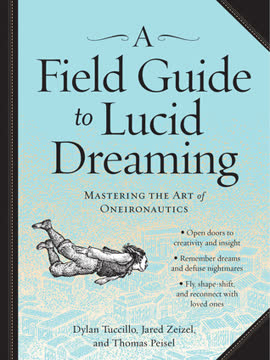
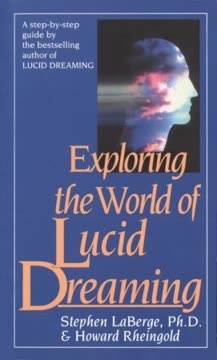
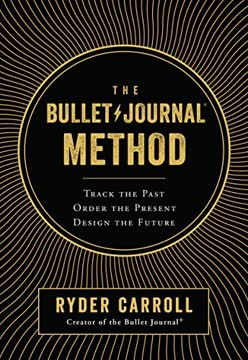
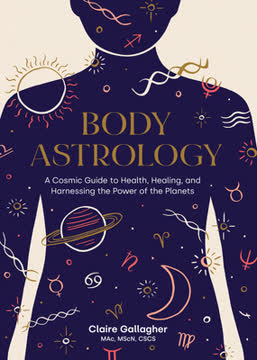


Download PDF
Download EPUB
.epub digital book format is ideal for reading ebooks on phones, tablets, and e-readers.
